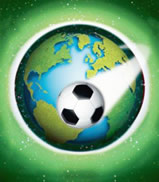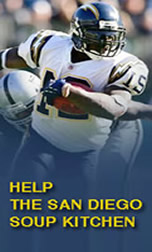
Soccer Scores a Goal for Your Health
Soccer is one of the oldest games. References to “kick ball” can be found as far back as 200 BC in China and around 4 BC in Greece. Although various versions of games that used a ball propelled by the feet emerged throughout the centuries, the first set of formal rules was set down by Cambridge University in 1848. The Football Association of England was founded in 1863 and further defined the rules of the game. The international governing body, Federation Internationale du Football, was founded in 1904 and today has more member nations than the United Nations.
A good reason to join in the celebration and choose the team of your preference is that soccer is a healthy and recommended sport for both sexes and all ages.
Soccer is known as a “high impact” sport that involves the players’ constant attention, coordination, agility, education and entertainment. In addition, during each match, a soccer player is in continuous movement, including the goal keeper, who has the most responsibility and pressure during the match: the defense of the goal line. Even though the goal keeper might not run or move as much as the other players, he is required to keep his attention on all the moves and show agility in stopping all the goal attempts. On the other hand, the audience, which has emotion and constant attention on the match, also has heightened adrenaline levels, the natural euphoria chemical. It is in that way that everyone in the stadium shares a moment of good circulation and oxygenation throughout the organism, specially as they join in yelling “gooaaal”. Each soccer player scores a goal in favor of their bones’ health and their physical development. Soccer is a sport that, when played during the younger years, helps in muscle development and strengthens the bone system in general by increasing bone mineral density (BMD).
A recent study made a comparison of BMD in three groups of adolescent female athletes, of whom 29 were swimmers, 19 weight lifters and 16 soccer players, all with a standard BMD level. The BMD levels in the soccer players were the highest, followed by those in the weight lifters and then by those in the swimmers. So for those who prefer swimming, adding some activities that involve running or jumping to their training is recommended.
Soccer may start at 18 months of age in an educational program for parents where children learn the moves as they play at a non-competitive level until they turn 9. They then move on to a stage in which, with constant training, they acquire greater agility, skill and the techniques necessary to be chosen at their level.
By following this training, parents teach their children to socialize, participate in a team and get them started on including physical activity in their lives.
Soccer is a sport that can begin as healthy recreation, but has the potential of becoming something professional, and along the way, winning each match is a goal to reach. In fact, great champions have turned out from non professional tournaments, such as England’s team captain David Beckham, who currently playing in Real Madrid earns an annual salary of $37 million, in addition to the earnings from the right to use his image and from making commercials.
The death of Algeria’s top scorer, Hocine Gacemi, from complications of a skull fracture after he “crashed head first into the ground after a clash of heads, along with parental questions on the safety of heading have brought this skill to the attention of the media. Also, the use of helmets in soccer has been debated.The US Consumer Product Safety Commission met in May 2000 to discuss head injuries and protective equipment.
Since most ball-related injuries are due to the ball hitting an unprepared,the first Safety rule to be followed during any match is: “Hit the ball,don’t let the ball hit you”.
Here are some safety measures from the American Academy of Orthopedists to avoid the most common injuries soccer players face:
• First, be prepared for accidents by having present someone who knows first aid for minor injuries, such as face cuts, bumps or minor sprains. However, it is also important to have someone at hand for major emergencies, such as concussions, dislocations or elbow, leg, knee, finger or toe fractures.
• Clinical studies have proven that muscles are more easily hurt when cold, which is why, before engaging in any sport, 3 to 5 minutes should be devoted to warm up and stretch muscles. You may walk, jump rope, bike or finish with 30 seconds of stretching.
• The field should be in good conditions, be flat, not wet, not have any holes or trash, and the ball should not absorb water, since this makes them heavier and an injury risk. Spanish
Rehabilitation Study at the American Physical
Therapy Association Combined Sections
SAN DIEGO, CA - Feb.2006 - As a result of the study, conducted by researchers at San Diego State University (SDSU) and the Medical University of Ohio, rehab specialists now have an accurate tool to more effectively measure partial weight bearing status for patients recovering from injuries to the hip, ankle or knee. More
To Many Ignore Symptoms of Mini Stroke
Only 1 in 10 sought emergency treatment in British study.
By Ed Edelson from the U.S. National Health Information Center
Fewer than half of the people in a new study who felt the symptoms of a "mini-stroke" sought medical attention quickly, and just one in 10 went to an emergency room.
"These figures are a cause for concern," said lead researcher Dr. Matthew F. Giles, a research fellow in clinical neurology at the University of Oxford, England.
According to Giles, these transient ischemic attacks (TIAs) put individuals at high risk of having a major stroke soon afterward.
Reporting in the March 31 issue of Stroke , Giles and his colleagues interviewed 241 people who had a TIA, asking them about what they thought was causing their symptoms. Symptoms typically include a sudden numbness or weakness of part of the body, sudden confusion, visual problems, dizziness or a sudden severe headache.
Just 107 recognized the onset of symptoms as an emergency. Only 27 sought non-emergency treatment the same day; 43 waited until the next day to seek treatment, and 64 delayed two days or more.
People who had TIA symptoms on a Friday or Saturday were especially unlikely to seek medical attention the same day.
"That is an example of people not paying heed to these symptoms," Giles said. "If you have a TIA on the weekend, you'll say, 'I'll get in touch with the family doctor on Monday.' But by Monday everything is settled down, and you don't do it."
The nature of the symptoms had a strong influence on an individual's response. People who experienced major motor problems such as weakness in the face, arm or leg were more likely to recognize these symptoms as an emergency. The same was true for those whose symptoms persisted for more than an hour.
A TIA is temporary blockage of a brain artery, particularly common in the elderly. The average age of the people in the study was 71. Prompt treatment of the immediate event and follow-up therapy -- such as lowering cholesterol levels and blood pressure -- can reduce the long-term risk of a major stroke, Giles said.
What was true in the British study holds for the United States, noted Dr. Claudette Brooks, an assistant professor of neurology at West Virginia University and a spokeswoman for the American Heart Association.
"The most important thing to do is education, not only for the population at large but also for people at high risk, such as those with coronary artery disease, high cholesterol or diabetes," Brooks said.
Anyone feeling the symptoms of a TIA should go directly to an emergency room, she advised. "If you call your family doctor, you're wasting time," she said. "If you call your primary-care physician you'll be told to go to an emergency room anyway."
Immediate action is necessary, Brooks said, because after a TIA, "you are at increased risk especially over the next 90 days, but also of having a major stroke in the next 48 hours to seven days."
![]()
TEL- 619-427-4111 Email - Health@infooption.com
Salud+HealthInfo is for information and educational purposes only. You should not rely on this information as a substitute for personal medical attention, diagnosis or hands-on treatment. If you are concerned abut your health or that of a child, please consult your family's physician or health provider immediately and do not try to diagnose yourself.
Salud+Health Info is published and distributed free of charge by Info Option Network (ION) Publishing Company. All rights reserved. ION reserves the right to edit all information provided to the publisher as it deems necessary with regard to legal, public health, State, Federal, International other standards for the proper publishing of this periodical. We reserve the right to refuse articles and advertising at any time. No reproductions of this magazine by any means are permitted without the express written consent of ION Publishing Company. ION has no affiliation with any health organization or political group. ION is not responsible for the claims of advertisers, or the variety of submitted written articles.
Copyright © 2001-2006 Info Option Network
 info
info